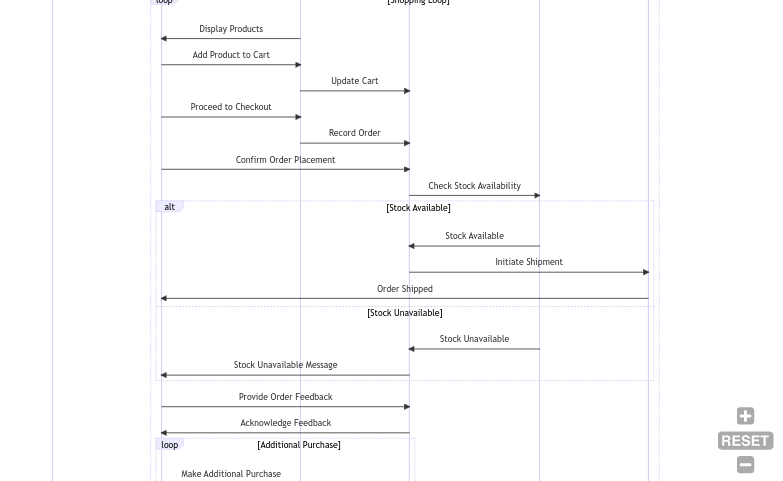Streamlining Inventory Management in Retail Industry with ERP/CRM Solutions
Use Case Title: Streamlining Inventory Management in Retail Industry with ERP/CRM Solutions
Use Case Description:
1. Introduction:
In today’s competitive retail landscape, efficient inventory management is critical for success. This use case explores how an established ERP/CRM solution can optimize inventory management within the retail industry’s value chain, resulting in cost savings, improved customer satisfaction, and increased profitability.
2. Background:
The retail industry encompasses various stages in its value chain, from procurement and warehousing to sales and customer relationship management. Efficiently managing inventory across these stages is a constant challenge.
3. Use Case Scenario:
Imagine a well-established retail company, “RetailCo,” which operates multiple stores across different locations and an online e-commerce platform. RetailCo faces the following challenges:
- Inventory Control: Difficulty in maintaining optimal stock levels across different locations and channels, leading to overstocking or stockouts.
- Order Fulfillment: Inefficient order processing and delivery times, resulting in customer dissatisfaction.
- Customer Relationship Management: Lack of a unified customer database and personalized marketing efforts.
4. Proposed Solution:
RetailCo decides to implement an integrated ERP/CRM system tailored to the retail industry’s needs. Here’s how the solution addresses each challenge:
- Inventory Control: The ERP system provides real-time inventory tracking, demand forecasting, and automated replenishment. RetailCo can optimize stock levels, reduce carrying costs, and minimize stockouts.
- Order Fulfillment: The CRM system streamlines order processing and automates delivery scheduling, ensuring faster and accurate order fulfillment. This leads to improved customer satisfaction and loyalty.
- Customer Relationship Management: The CRM system consolidates customer data from various touchpoints, including in-store and online interactions. RetailCo can use this data for personalized marketing campaigns, enhancing customer engagement and retention.
5. Implementation:
The implementation of the ERP/CRM solution involves:
- System Selection: RetailCo selects an established ERP/CRM vendor with a strong track record in the retail industry.
- Customization: The chosen solution is customized to align with RetailCo’s specific business processes and requirements.
- Training: Employees receive comprehensive training to ensure smooth adoption of the new system.
6. Benefits:
The benefits of implementing the ERP/CRM solution are evident:
- Cost Savings: RetailCo reduces excess inventory costs and minimizes operational inefficiencies.
- Improved Customer Satisfaction: Faster order processing and personalized marketing efforts result in happier customers.
- Increased Profitability: By optimizing inventory and enhancing customer engagement, RetailCo experiences a significant boost in profitability.
7. Conclusion:
By implementing an established ERP/CRM solution tailored to the retail industry’s value chain, RetailCo successfully overcomes its inventory management challenges. This use case demonstrates how such a solution can bring about tangible benefits, ultimately ensuring RetailCo’s competitiveness and long-term success in the retail sector.

This sequence diagram illustrates the sequence of interactions and messages between the customer, website, CRM, inventory system, and shipping system in the retail industry ERP/CRM system use case.
Sequence Descriptions:
- Customer (C): Represents the customer interacting with the system.
- Website (W): Represents the RetailCo website.
- CRM (R): Represents the CRM system.
- Inventory (I): Represents the inventory management system.
- Shipping (S): Represents the order fulfillment and shipping system.
Sequence Steps:
- The customer (C) visits the RetailCo website (W).
- In a loop for the shopping process:
- The website (W) displays products to the customer (C).
- The customer adds a product to the cart.
- The website updates the cart and records the order in the CRM (R).
- The customer proceeds to checkout and confirms the order placement.
- The CRM (R) checks stock availability with the inventory system (I).
- If stock is available, the order is initiated for shipment.
- If stock is unavailable, a message is sent to the customer.
- The customer provides order feedback, which is acknowledged by the CRM (R).
- Within an additional purchase loop, the customer may make more purchases.
- The customer ends their visit to the website.
Solutions Team
Solutions discovery –
Web conferencing details are provided upon confirmation.
Our Objectives:
Understand your needs/problems.
Confirm if we can help.
Provide budgetary costs.
Get In Touch: Use the Links to Book Appointments: forms.gle, youcanbook.me, vcita.com
or fill out the form below:
Get In Touch:
or fill out the form below: